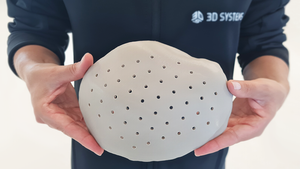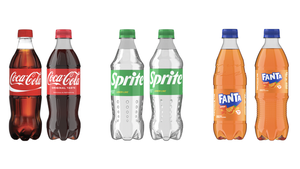January 1, 2006
TPE technologies and developments move forward and go global.
Thermoplastic elastomers (TPEs) are groupings of material families (see box next page) that have common elastomer-like properties, but with processing advantages of thermoplastics compared to thermoset rubbers.
The name TPE is often misused to refer to a specific TPE type (for example, thermoplastic vulcanizates [TPVs] and styrene-butadiene copolymers [SBCs] are referred to as TPEs without being specific) rather than a subset of a class of materials. Inter-TPE competition is common; for example, o-TPVs compete against PVC-based TPEs, thermoplastic polyurethanes (TPUs), and copolyesters with styrene-ethylene/butylene-styrene (SEBS).
As expected, this usually results in a drift toward the lowest-priced competitor. TPEs also compete with PVC compounds, engineering polymers, polypropylene compounds, plastomer resins, and some rubbers.
New TPE families
The performance envelope of TPE families has expanded in recent years with the addition of:
Super TPVs (s-TPVs) based on the use of acrylic, nitrile, and silicone rubbers as the "islands" in a "sea" of plastic resins including copolyesters, polypropylene (PP), and different engineering resinsSBC-based TPVs in which SEBS-type (or SEPS) styrene block copolymer TPEs are crosslinked to improve their heat and chemical resistance and compression set propertiesAlloys (particularly of TPUs and SEBS-type TPEs) to provide improved bondability to a range of substrates for soft-touch applicationsThe improvement of surface properties and low-temperature performance via the incorporation of nanofillers and high aspect ratio (HAR) talc.Growth opportunitiesTPEs have maintained 8-10% growth during the last several years. Olefinic TPVs and SEBS classes have enjoyed double-digit growth.Expansion of the TPE performance envelope promises the potential for rapid growth, especially into traditional rubber strongholds such as belting, hose, automotive body and glazing seals, non-automotive glazing seals, bellows, and continued penetration of a broader range of soft-touch applications. Adding value via process technologyRaw material price increases have placed renewed emphasis on the ability of TPEs to add value via new fabrication technologies. Examples of these process technology shifts include: Two-shot molding of large parts (formerly restricted to small parts)Suction blowmolding of thin, highly shaped tubing such as for fuel systems3D blowmolding of high-performance boots/bellows (in s-TPV)Sequential valve gating for bumper fascia, interior trim, glazing seals. Automotive marketsAutomotive accounts for 40-50% of demand for most TPEs and is a process and materials technology driver. It is also the sector in which major rubber substitution opportunities (body and glazing seals, hose, belting, underhood, bellows) and PVC substitution opportunities (coated fabrics, skins, foams) can be found. Underhood applications in particular are the target of the new s-TPVs in which high oil/chemical resistance, temperature resistance, and long-term dimensional stability are critical properties. The potential in automotive applications results from TPE''s thermoplastic characteristics, as well as from its ability to be processed into a broad range of shapes, both alone and in combination with rigid members, in a cost-effective system. Non-automotive marketsTPEs are spread across a broad range of non-automotive markets, including consumer products, housewares, medical, personal care, sports/leisure, building/construction, appliance/tools, footwear (especially TPU and SBS-type TPEs), and fluid handling (for gaskets, hose, and tubing). The movement of some of these end-use markets to Asian manufacturing is shifting the geographic demand pattern for TPEs.Coated fabricsThis is a growth market in which newly formulated SEBS and TPU-type TPEs are starting to penetrate automotive and non-automotive applications. They are in competition with dispersion-coated polyurethane and PVC. PVC is a particularly strong incumbent due to its low cost, generally satisfactory properties, and processing versatility.Soft touchHaptic is valued in a broad range of applications. Initial TPE entry was via small parts (knobs, toothbrushes, writing instruments). Recent molding technology, bonding formulations, and low-viscosity materials formulation (to permit large area, thin cross-section parts) show promise in automotive applications (door trim panels, instrument panels) as well as in sheet applications.Role for foamingThe technologies for foaming TPEs have, to date, not provided satisfactory properties (high-quality surface, fine cells, and uniform cell size distribution) to allow TPEs to compete in many rubber and PVC applications. Improvements in foaming technology, such as via use of supercritical fluids and new blowing agent systems, promise to open a broad range of new high-volume applications. Foaming with two-shot molding is a particularly promising high-volume process combination. Robert Eller, president, Robert Eller Assoc. [email protected] (Note: A second edition of a TPE multiclient study will be released later this year.)
You May Also Like


